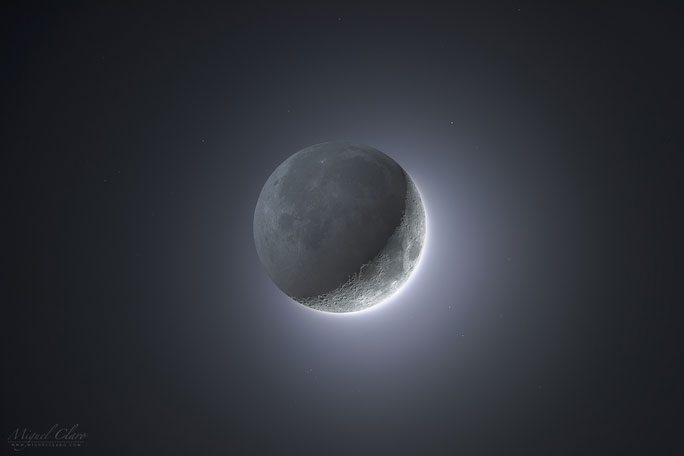Not only does the Moon cast a silvery light down to Earth, but Earth also has moments when it shines back at its satellite, creating a rare phenomenon known as a “ghost moon” on the Summer Solstice, June 21.
According to Live Science, the Moon is currently in a thin crescent phase, but on June 21, observers from Earth will get to enjoy a “ghost moon” appearing very round due to a phenomenon called “Da Vinci light.”
“Da Vinci light,” also known as “Earthshine,” can only be seen when the crescent moon hangs low near the horizon during the first few days of its orbit around Earth. In summer, the moon often hangs low in the early evening, providing additional opportunities for this ethereal phenomenon to return.

The Moon in “Da Vinci light.”
As such, the crescent moon will temporarily transform into a full moon shape, but apart from the sharply lit crescent, the rest of the circular shape will glow faintly and eerily.
“Da Vinci light” was described by the Italian scientist Leonardo Da Vinci in the 15th century. He theorized that sunlight is subtly reflected onto the Moon by Earth’s oceans on certain days, creating an “illusory” full moon.
In modern times, NASA has “standardized” Da Vinci’s discovery, finding that the primary cause of this phenomenon is clouds and sea ice rather than the surface of the oceans.
In folklore, “Da Vinci light” is also referred to as “ash-colored light” or “old moon in the embrace of the new moon.”
The night of the Summer Solstice on June 21 is further captivating due to the alignment of the two brightest planets in the sky with the aforementioned “ghost moon,” namely Mars and Venus.
Venus emits a white light with a slight yellow tint, while Mars has its characteristic red hue. However, Mars is currently quite far from Earth, making it somewhat difficult to see.
According to Time and Date, the best time to observe this phenomenon is in the early evening of the Summer Solstice, June 21. You can also observe it the following evening, June 22.


















































